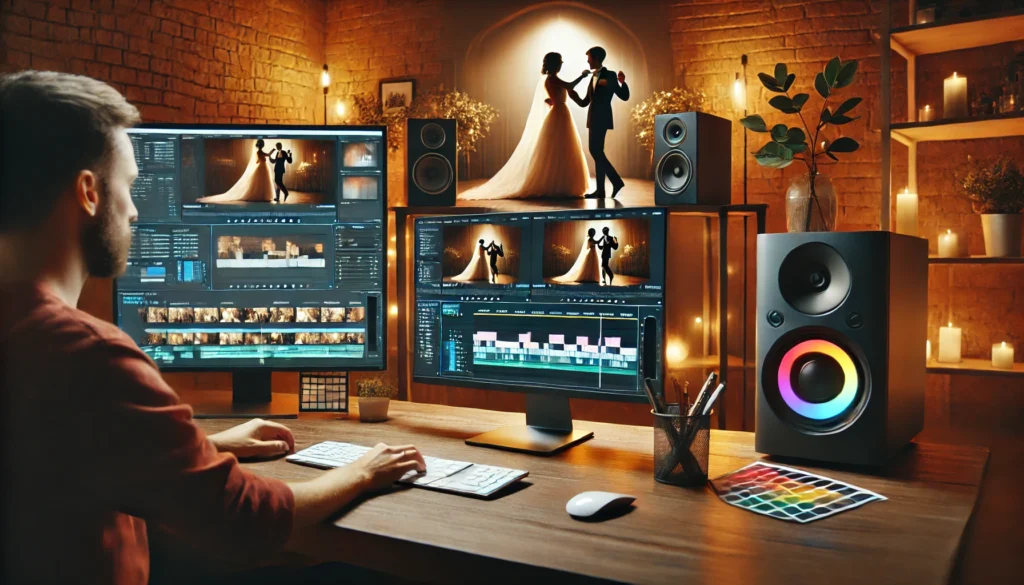What Goes Into Editing a Wedding Film?

A beautifully crafted wedding film is more than just a collection of clips set to music—it’s a carefully edited, emotionally compelling story. As a wedding videographer, the magic truly happens in the editing room, where raw footage is transformed into a cinematic experience. Here’s a behind-the-scenes look at the key elements that go into editing a wedding film: storytelling, music selection, and color grading.
Storytelling: Crafting the Narrative
Every couple has a unique love story, and a wedding film should reflect that. Editing isn’t just about stitching clips together; it’s about crafting a narrative that highlights the emotions and key moments of the day.
- Selecting Key Moments: The first step is reviewing hours of footage to find the most meaningful moments—exchanging vows, emotional speeches, first looks, and spontaneous interactions.
- Creating a Flow: The film should have a natural progression, capturing the excitement of getting ready, the beauty of the ceremony, and the joy of the reception. The pacing is crucial—too slow, and it drags; too fast, and it feels rushed.
- Incorporating Audio: Dialogue from vows, speeches, and even natural laughter or cheers add authenticity and depth. A well-placed voiceover from the ceremony can enhance the emotional impact of the visuals.
Music Selection: Setting the Mood
Music plays a vital role in shaping the emotional tone of a wedding film. The right soundtrack can elevate the storytelling, making moments feel more intimate, romantic, or celebratory.
- Matching the Couple’s Style: Some couples prefer a soft, acoustic vibe, while others love cinematic orchestral music or upbeat indie tracks. Understanding their style helps in curating the right sound.
- Building Emotional Swells: Just like a movie soundtrack, wedding films should have crescendos and quiet moments that align with the visuals, enhancing anticipation and sentimentality.
- Licensing Matters: Using licensed music ensures there are no copyright issues when sharing the film online. Many videographers use platforms like Musicbed, Artlist, or Soundstripe to find high-quality tracks.
Color Grading: Enhancing the Visual Aesthetic
Raw footage straight from the camera often lacks the polish and cinematic look seen in professional wedding films. Color grading is essential in giving the film its final aesthetic.
- Creating a Consistent Look: Different lighting conditions throughout the day—morning prep, outdoor ceremonies, indoor receptions—can create visual inconsistencies. Grading ensures everything looks seamless.
- Enhancing Emotion Through Color: Warm tones can add romance, while cooler tones can create a timeless, elegant feel. Each film’s color grade should match the mood of the wedding.
- Refining Skin Tones: Ensuring that skin tones look natural and flattering is key to a professional-quality wedding film.
The Final Touches
Once storytelling, music, and color grading are perfected, additional elements like slow-motion effects, seamless transitions, and light visual effects can further elevate the film. The goal is to deliver a wedding film that not only captures the day but allows the couple to relive it with all the emotions intact.
Editing a wedding film is a labor of love, requiring patience, skill, and creativity. Every cut, soundbite, and color adjustment brings the couple’s story to life, making all the hours in the editing room worth it.
Are you planning your wedding and want a film that tells your unique love story? Let’s create something unforgettable together.
